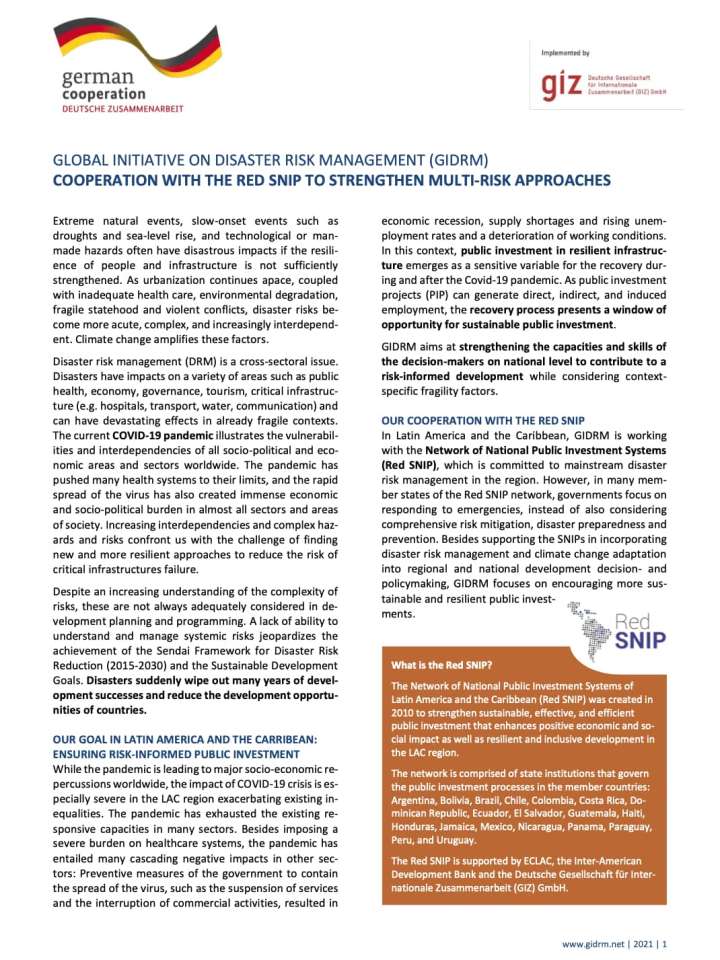Global initiative on disaster risk management (GIDRM): Cooperation with the Red SNIP to strengthen multi-risk approaches
Extreme events, slow-onset events such as droughts and sea-level rise, and technological or man-made hazards often have disastrous impacts if the resilience of people and infrastructure is not sufficiently strengthened. As urbanization continues apace, coupled with inadequate health care, environmental degradation, fragile statehood and violent conflicts, disaster risks become more acute, complex, and increasingly interdependent. Climate change amplifies these factors.
In Latin America and the Caribbean, GIDRM is working with the Network of National Public Investment Systems (Red SNIP), which is committed to mainstream disaster risk management in the region. However, in many member states of the Red SNIP network, governments focus on responding to emergencies, instead of also considering comprehensive risk mitigation, disaster preparedness and prevention. Besides supporting the SNIPs in incorporating disaster risk management and climate change adaptation into regional and national development decision- and policymaking, GIDRM focuses on encouraging more sustainable and resilient public investments.
Explore further
